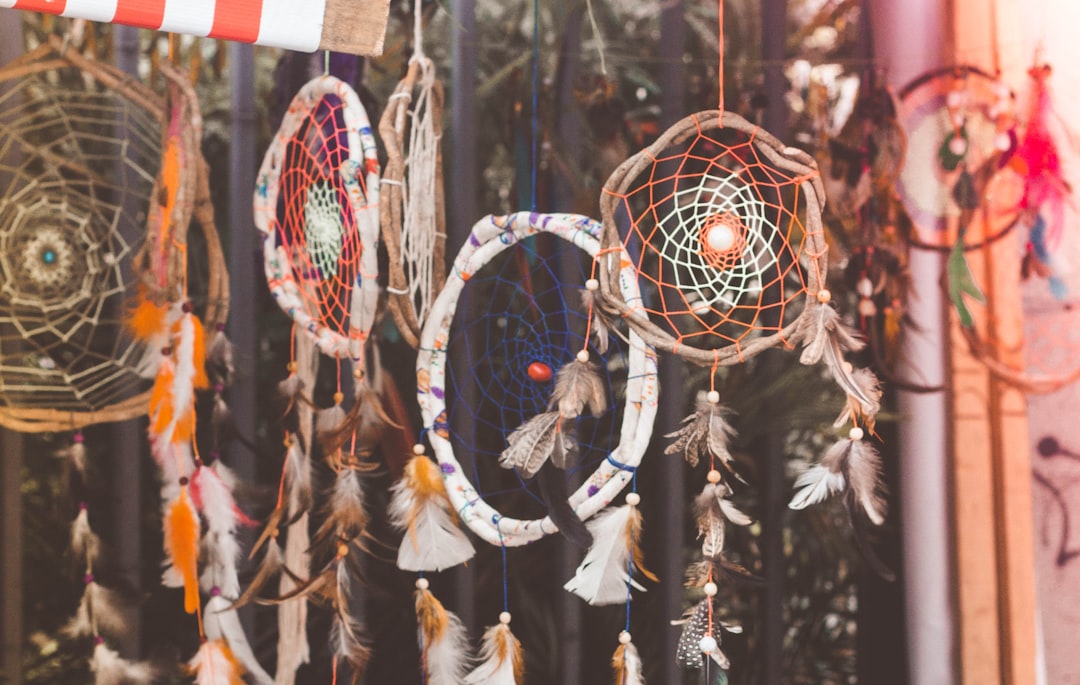
Native American myths are a fundamental component of the cultural heritage of North America’s indigenous peoples. These narratives have been transmitted orally across generations, significantly influencing the beliefs, values, and customs of Native American societies. Rooted in the natural world, these myths frequently incorporate animals, spirits, and supernatural entities.
They function as a means for Native Americans to interpret their environment and convey important teachings to subsequent generations. These myths extend beyond mere storytelling, embodying the spiritual and philosophical tenets of Native American cultures. They offer insights into indigenous cosmologies, relationships with nature, and perceptions of humanity’s place in the universe.
Often highly symbolic, these narratives explain the world’s origins, human creation, and the importance of celestial bodies and natural phenomena. Additionally, they serve as a conduit for Native Americans to maintain connections with their ancestors and preserve their cultural legacy.
Key Takeaways
- Native American myths are an integral part of their culture and have been passed down through generations.
- Myths play a crucial role in shaping the beliefs, values, and traditions of Native American communities.
- Common themes in Native American myths include the relationship between humans and nature, the importance of storytelling, and the presence of supernatural beings.
- Famous myths and legends such as the story of the creation of the world and the trickster figure are widely known in Native American culture.
- The oral tradition is essential in preserving Native American myths and ensuring their continued relevance and significance.
The Role of Myths in Native American Culture
The Role of Myths in Preserving Cultural Heritage
Myths play a vital role in Native American culture, serving as a means of passing down knowledge, traditions, and values from one generation to the next. They are an essential part of the oral tradition of Native American communities and are often shared through storytelling, ceremonies, and rituals. Myths serve as a way for the community to come together and to reinforce their shared identity and beliefs.
Myths as a Framework for Understanding the World
They also provide a framework for understanding the world and for making sense of the complexities of life. In addition to preserving cultural heritage, myths also serve as a form of education for young members of the community. Through these stories, children learn about their history, their values, and their place in the world.
Myths as a Source of Moral Guidance and Inspiration
Myths also provide moral guidance and teach important lessons about respect for nature, cooperation, and the importance of living in harmony with the natural world. They also serve as a source of inspiration and creativity, influencing art, music, and literature within Native American communities.
Common Themes in Native American Myths

Native American myths often share common themes that reflect the spiritual beliefs and cultural values of the indigenous peoples of North America. One common theme is the close relationship between humans and nature. Many myths depict animals as powerful spiritual beings or as ancestors who have important teachings to share with humans.
These stories emphasize the interconnectedness of all living beings and the importance of respecting and honoring the natural world. Another common theme in Native American myths is the concept of balance and harmony. Many myths teach about the importance of maintaining balance in all aspects of life, including relationships, community dynamics, and interactions with the natural world.
These stories often emphasize the need for cooperation, respect, and reciprocity in order to maintain harmony within the community and with the environment. Additionally, many Native American myths explore the idea of transformation and change. These stories often feature characters who undergo profound personal transformations or who shape-shift into animals or other forms.
These myths reflect the belief in the fluidity of existence and the idea that change is a natural part of life. They also emphasize the importance of adaptability and resilience in facing life’s challenges.
Famous Native American Myths and Legends
| Myth/Legend | Region | Main Characters | Lesson/Message |
|---|---|---|---|
| The Legend of the Dreamcatcher | Ojibwe (Chippewa) tribe | Asibikaashi (spider woman), Nokomis (grandmother) | Protection from bad dreams and negativity |
| The Story of the White Buffalo Calf Woman | Lakota Sioux tribe | White Buffalo Calf Woman | Teaching about the sacred pipe and the importance of peace, love, and harmony |
| The Legend of the Cherokee Rose | Cherokee tribe | Trail of Tears survivors | Symbol of hope and resilience in the face of hardship |
| The Story of the Thunderbird | Various Native American tribes | Thunderbird | Symbol of power, protection, and strength |
There are numerous famous Native American myths and legends that have been passed down through generations and continue to be celebrated within indigenous communities today. One well-known myth is that of the creation of the world, which varies among different tribes but often involves a great spirit or creator bringing forth the earth, sky, and all living beings. Another famous legend is that of the trickster figure, such as Coyote or Raven, who is known for their mischievous antics and their role in shaping the world.
The legend of the White Buffalo Calf Woman is another widely recognized myth within Native American culture. This story tells of a sacred woman who brought important teachings to the Lakota people and is revered as a symbol of purity and spiritual wisdom. The story of the Hero Twins, who defeated various monsters and brought important gifts to humanity, is also a prominent myth within many Native American traditions.
These myths and legends continue to be celebrated through storytelling, artwork, dance, and other cultural practices within Native American communities. They serve as a source of pride and identity for indigenous peoples and are an important part of preserving their cultural heritage.
The Importance of Oral Tradition in Preserving Myths
The oral tradition has played a crucial role in preserving Native American myths for thousands of years. Through storytelling, songs, chants, and rituals, these myths have been passed down from one generation to the next, ensuring that they remain an integral part of indigenous culture. The oral tradition allows for flexibility and adaptation within the myths, as storytellers can tailor their retellings to suit the needs of their audience or to reflect changes within their community.
The oral tradition also serves as a way for indigenous communities to maintain a strong sense of cultural identity and connection to their ancestors. By sharing myths through spoken word rather than written text, these stories remain dynamic and alive within the community, allowing for ongoing interpretation and engagement with their meaning. This form of transmission also fosters a sense of communal participation, as listeners actively engage with the storyteller and contribute to the ongoing evolution of the myths.
Furthermore, the oral tradition ensures that these myths remain accessible to all members of the community, regardless of literacy or language barriers. This inclusive approach to preserving cultural heritage allows for greater participation in cultural practices and fosters a sense of unity within indigenous communities.
The Influence of Native American Myths on Modern Culture

Literary and Artistic Expressions
Many authors have drawn inspiration from Native American myths to create novels, short stories, and poetry that explore themes of spirituality, nature, and identity. Artists have also been influenced by these myths, incorporating symbols and imagery from indigenous traditions into their work.
On-Screen Representations
In film and television, Native American myths have been depicted in various ways, often serving as a source of inspiration for storytelling or as a means of representing indigenous perspectives on screen.
Popular Culture and Environmentalism
Additionally, elements of Native American mythology have been incorporated into popular culture through fashion, music, and even video games. The influence of these myths can also be seen in environmental movements that emphasize the importance of conservation and respect for nature. Many aspects of indigenous spirituality and ecological wisdom have been integrated into contemporary environmental activism, reflecting the enduring relevance of Native American myths in addressing modern-day challenges.
Exploring the Diversity of Native American Myths
Native American myths are incredibly diverse, reflecting the wide range of cultures, languages, and traditions within indigenous communities across North America. Each tribe has its own unique set of myths that are shaped by their specific geographical location, historical experiences, and spiritual beliefs. For example, myths from tribes in the Pacific Northwest may focus on creatures such as orcas or eagles, while those from tribes in the Southwest may center around desert landscapes and sacred mountains.
Furthermore, within each tribe, there are often multiple versions of the same myth, reflecting regional variations or individual storytellers’ interpretations. This diversity highlights the dynamic nature of Native American myths and underscores their ongoing relevance within contemporary indigenous communities. Exploring this diversity allows for a deeper understanding of the complexity and richness of indigenous cultures.
It also serves as a reminder that Native American myths are not relics of the past but are living traditions that continue to evolve and adapt within modern society. By embracing this diversity, we can gain a greater appreciation for the enduring significance of Native American myths and their continued impact on contemporary culture.
FAQs
What are Native American myths?
Native American myths are traditional stories passed down through generations that explain the origins of the world, natural phenomena, and the beliefs and values of various Native American tribes.
What are some common themes in Native American myths?
Common themes in Native American myths include the relationship between humans and nature, the importance of animals and spirits, the creation of the world, and the significance of certain rituals and ceremonies.
How were Native American myths traditionally passed down?
Native American myths were traditionally passed down orally, through storytelling, songs, and rituals. They were often shared during communal gatherings and ceremonies, and were considered an important part of tribal identity and cultural heritage.
What are some well-known Native American myths?
Some well-known Native American myths include the story of the creation of the world, the legend of the trickster figure (such as Coyote or Raven), and the tales of heroic figures and their adventures.
How do Native American myths differ from other cultural myths?
Native American myths often emphasize the interconnectedness of all living beings and the importance of living in harmony with nature. They also reflect the specific beliefs, values, and traditions of different Native American tribes.






